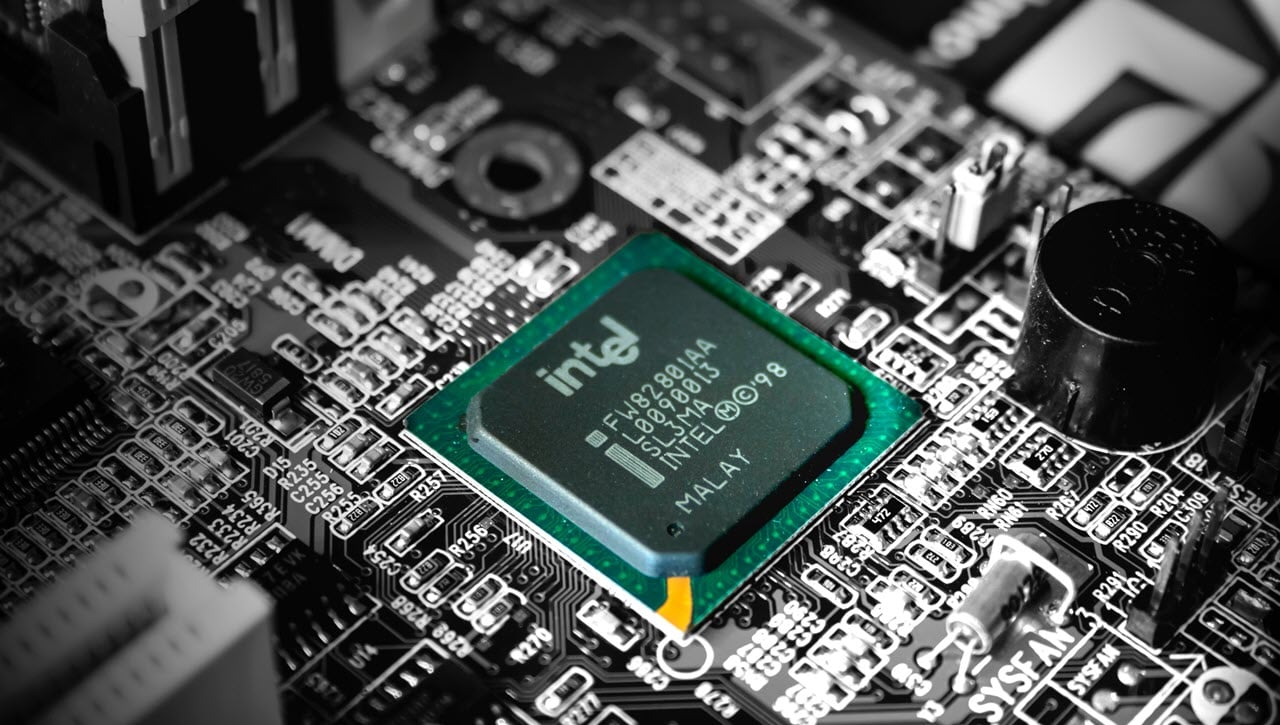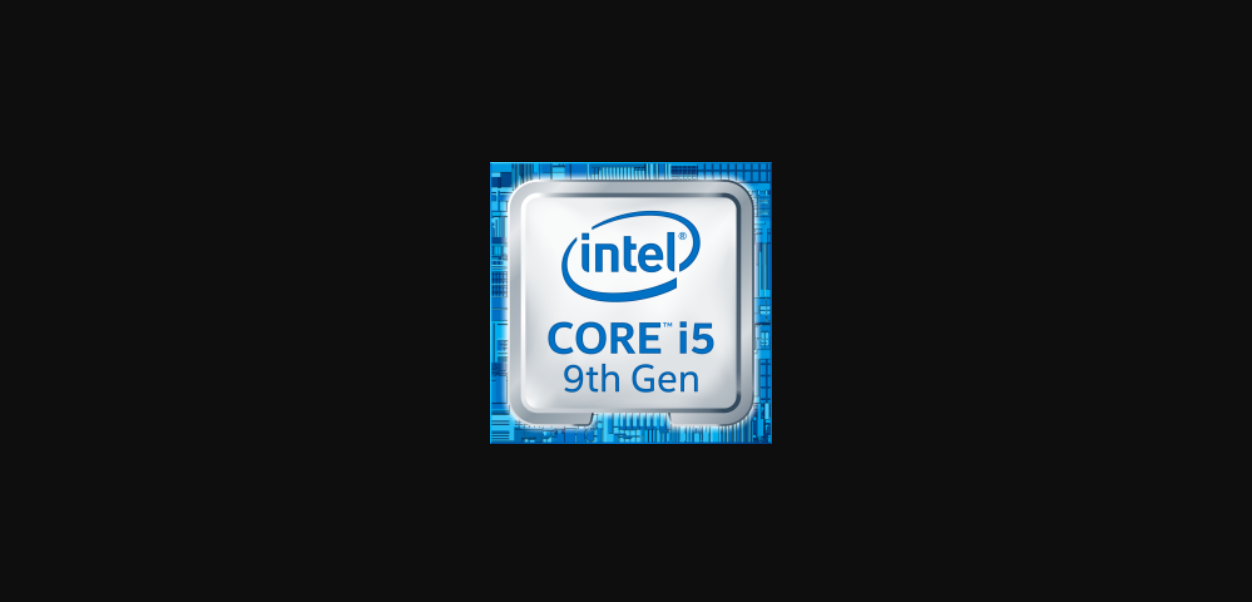The integrated circuit industry has been evolving at an exponential rate. The number of transistors on a processor has been increasing as per Moore’s law but this growth has started to slow down because the number of switching devices on an IC has reached a whopping 1.75 billion transistors for Intel’s 10th generation CPUs. The clock speed on these new CPUs is 4.4 GHz, which is mind-boggling.
Integrated circuits were not this sophisticated two decades ago. They operated at much lower clock speeds (66MHz for Pentium 1); it had 1.6 million transistors. So by looking at sheer numbers, one can realise that we have come a long way
In this article, we will be comparing all Intel processors from Pentium 1 to the currently running Intel i9.
Pentium 1
Pentium 1was released in 1993. It got its name because it was the 5th processor in the 80×86 family. It came with a clock frequency of 66Mhz and could execute a maximum of 2 instructions per cycle. Pentium had a 64-bit memory interface with 16 KB cache and eight 32 bit general-purpose registers.
With 3.1 million transistors (800-nanometer lithography), 262.4 mm^2 die, and eight 80-bit floating-point registers, Pentium 1 was a power-hungry processor and dissipated 16 W power, which gave it a performance score of 64.5 for integer calculations and 56.9 for floating-point calculations. It has two 32-bit data busses to transfer data to the CPU. The maximum cap for RAM is 4GB, for 500MB to 60GB external storage.
Looking at the specs, it seems like this processor could not do much. But these professors did not have to run a heavy OS like Windows 10. All it needed to do was to run an MS-DOS, which it could quite well.
Pentium 2
Pentium 2 was released in 1997. It came with a clock frequency range of (255-450Mhz) and could execute a maximum of 4 instructions per cycle. Equipped with a 64-bit memory interface, 512KB cache, and eight 32 bit general-purpose registers, with 7.5 million transistors (350nm lithography) and eight 80-bit floating-point registers, it was good enough to run a proper operating system (Linux or OS X).
Pentium 2 was a significant upgrade to the older Pentium 1 in terms of clock speed, number of transistors, and cache memory. It introduced MMX multimedia instructions, which allowed it to control media devices.
Power consumption on the Pentium 2 was 25W. It gave a Winstone score of 35, which was great for a processor at that time. Winstone 94 saves elapsed times for 12 application scripts internally and uses them to compute the final score. The maximum cap for RAM and external storage was the same as Pentium 1.  Also read: What is the difference between GPU and FPGA?
Also read: What is the difference between GPU and FPGA?
Pentium 3
The first version of Pentium 3 came out in 1999. It bumped the clock frequency up to 1.3GHz. There were four versions of Pentium 3 — Katmai, Coppermine, Coppermine T, and Tualatin.
Katmai
Katmai for the first Pentium 3 processor. It had a clock frequency of (450 and 600) MHz. The transistor count was increased by two million (9.5 million transistors) and used a 250 nm process for manufacturing. Pentium 3 upgraded the system bus speed to 133MHz. The instructions set was updated by using SSE that offered significant advantages in floating-point calculations
Most of the other parameters were the same as the Pentium 2, but it was a substantial upgrade in terms of transistor count and manufacturing process.
Coppermine
Coppermine upgraded the clock frequency range to (500Mhz-1GHz). The main upgrade that the Coppermine saw was an on-chip L2 cache. This cache ran at the clock frequency of the CPU and had a size of 256 KB.
Intel launched a version at 1.3 GHz but due to clocking issues it was not successful
Coppermine T
It was a transition between the Coppermine and Tualatin, which decreased the voltage that ran the transistors to 1.25 V compared to the older 1.5 V versions. This provided less power dissipation per transistor.
Tualatin
This was one of the best performing processors by Intel. It used a better 130nm lithograph and increased the clock frequency to 1.4 GHz.
Most of the other parameters were the same as the older versions, but Tualatin was able to provide an excellent balance between power consumption and performance.
Pentium 4
The Pentium 4 made a debut in 2000. There were a total of nine processors under the Pentium 4. Each one of them was upgrades to previous versions. We will be talking about Northwood, which came in 2002.
The Pentium 4 came with a lot of significant updates. Clock frequencies 2.8 GHz; bus data rates 800MHz. It used a 130 nm manufacturing process, and the transistor count increased to a mind-boggling 55 million transistors. L2 cache size increased to 512KB. New technologies like Hyperthreading, SSE2/Streaming SIMD Extensions 2, and a new instruction set net burst made the processor insanely fast.
Due to the increase in the number of transistors and clock frequencies, the power dissipation increased to 79.5W. 
Celeron
Celeron was a name given by Intel to low-end CPUs. They had lower clock frequencies and smaller caches. They were used to target a more budget restricted market. There were several Celeron processors released from 1998 onwards. We will be talking about Celeron Northwood 128 (desktop) which came with Pentium 4. The Celeron had clock speeds of 2 GHz, 256 KB L2 cache, 400MHz data bus speed, and used a similar 130nm manufacturing process. The Celeron did not support hyperthreading
Right around 2004, the laptop industry started to grow. Intel began to manufacturing mobile versions of both Pentium and Celeron.
Pentium M
The Pentium M was a better and costlier version of Celeron processors and came in the market in 2003. It had a clock frequency of 1.7Ghz, 2MB L2 cache, 144 million transistors (90nm lithography), data bus speed 533 MHz, and used a 32-bit architecture like all previous Intel processors.
Pentium M came with Enhanced Intel SpeedStep Technology, which switches both voltage and frequency in between high and low levels in response to processor load. Due to this, it had a power dissipation of 27W.
Celeron M 370
The Celeron 370 came out in 2004. It has a clock frequency of 1.5Ghz, 144 million transistors (90 nm manufacturing process), data bus speed 400MHz, and had lower power dissipation of 21W. The main reason for this low energy dissipation was a lower transistor logic value of 1 volt. It also used a smaller manufacturing process which decreased power requirements.
The Celeron M were cheap notebook-based options compared to Pentium M counterparts.
Core Duo
Once Intel started manufacturing processors with clock speeds of 2 GHz and smaller manufacturing processes, they encountered a big problem. This problem is known as power leakage, and it causes transistors to malfunction. Put power leakage causes transistors to give logic 0 when they should be giving logic 1. This was a big problem for Intel as they could not increase clock frequencies any further.
Intel stared manufacturing processors with two cores to increase processing power. The first dual-core processor was the Pentium Dual-Core. The new dual-core processors used 64-bit architecture, which made them far superior to older versions.
Intel core duo was the company’s first dual-core mobile processor. It came in the market in January 2006. The core duo integrates two 32-bit Pentium M cores. Due to multiple cores, multiple threads can run on the two cores boosting processing speed. The Core Duo came with a shared 2MB smart cache and used a new 65 nm manufacturing process. These processors were clocked between 1.06 GHz and 2.33GHz
Due to the great success of the Core Duo, Intel launched the Core 2 Duo line, which included the Core Solo and Core 2 Quad. These three processors came in the market in July 2006. They used a 64-bit architecture and built on the older Core Duo processor.  Also read: How is RAM used in gaming and how much do you need?
Also read: How is RAM used in gaming and how much do you need?
Core 2 Duo
The Core 2 Duo used shorter pipelines, which made the processors faster. The Core 2 Duo processors were clocked at 3GHz; data bus speeds were 8 MHz, it has 151 million transistors using 65nm manufacturing technology, and the L2 cache size was updated to 3MB. In addition to all this, it came with Enhanced SpeedStep technology, Execute Disable Bit capability and, streaming SIMD extensions 3.
Core Solo
The Core Solo used the same die size as the Core Duo, but it had only one core. The Core solo was a cheaper version of the Core Duo. It had a similar transistor count as Core Duo processors. It had a clock frequency of 1.8GHz and data bus speeds of 533 MHz, 2MB L2 cache memory, and used a 32-bit architecture.
In addition to this, it came with deep sleep mode, deeper sleep mode, and an enhanced deeper sleep mode. All of these features were used to provide a lower power consumption of 31W.
Core 2 Quad
As the name suggests, the Core 2 Quad has four cores. Each of these four cores is clocked at 2.4 GHz coupled with a data bus speed of 1066Mhz. It has a total of 582 million transistors, and the core is manufactured using 65nm lithography. The cache memory of the Core 2 Quad is 8 MB. As it has four cores, the processor uses a lot of power (105W).
Pentium Dual-Core
Pentium Dual-Core processors came in the market in 2007. These had a clock speed of 2.8Ghz, 177 million transistors (32 nm manufacturing process), it had a 64-bit architecture, two L2 cache memories (256KB each). Besides, it also had a level 3 cache of 3MB. As this processor had two cores, it consumed higher power of about 72W.
We have talked a lot about the older intel processors. Now it is time to look at the present CPU scenario. We will be talking about the ninth generation processors henceforth.
Also read: Intel Core i9 vs Core i7 vs Core i5 vs Core i3: Chipsets compared
Intel core i3
 The present processors use state of the art manufacturing processes (19nm in 2019). This allows Intel to pack a lot more transistors in the same die size at 1.75 billion transistors on the Core i3, which It has four cores, and each of these cores has a base clock frequency of 3.80 GHz and a turbo frequency of 4.20 GHz. The data transfer on these chips is a staggering 8 gigabits/second. Even though it has so many transistors and high clock frequency in only consumes 65W power
The present processors use state of the art manufacturing processes (19nm in 2019). This allows Intel to pack a lot more transistors in the same die size at 1.75 billion transistors on the Core i3, which It has four cores, and each of these cores has a base clock frequency of 3.80 GHz and a turbo frequency of 4.20 GHz. The data transfer on these chips is a staggering 8 gigabits/second. Even though it has so many transistors and high clock frequency in only consumes 65W power
In addition to all this, the Core i3 supports a maximum memory size of 64 GB (DDR4-240), max memory bandwidth of 37.5 GB/s, and supports ECC memory. The core i3 comes with an Intel UHD Graphics 630 with a base frequency of 350MHz.
Intel Core i5
 The Intel Core i5 comes with a total of six cores. These cores have a base clock frequency of 3.70Ghz and a turbo frequency of 4.60Ghz. The cache memories on the i5 are 9MB in size. Due to the higher number of cores, the i5 is very power-hungry (95W). It does not support ECC memory.
The Intel Core i5 comes with a total of six cores. These cores have a base clock frequency of 3.70Ghz and a turbo frequency of 4.60Ghz. The cache memories on the i5 are 9MB in size. Due to the higher number of cores, the i5 is very power-hungry (95W). It does not support ECC memory.
It also offers a lot of security features like Intel AES Instructions, Secure Key, and Intel Boot Guard.
Intel core i7
 Intel i7 processors came with a total of eight cores, had 12MB of cache memory and the cores had a 2 GHz base frequency. The turbo frequency for these processors is 3.8GHz. As these processors have lower clock frequencies they consume less power compared to the i9 at 35W.
Intel i7 processors came with a total of eight cores, had 12MB of cache memory and the cores had a 2 GHz base frequency. The turbo frequency for these processors is 3.8GHz. As these processors have lower clock frequencies they consume less power compared to the i9 at 35W.
Intel core i9
 The Intel Core i9 is a complete mammoth in terms of both specs and performance. To begin with, it has a total of eight cores. These cores are clocked at 4GHz (base) and 5GHz (turbo). It has a huge cache memory of 16 MB and has a power rating of 127W.
The Intel Core i9 is a complete mammoth in terms of both specs and performance. To begin with, it has a total of eight cores. These cores are clocked at 4GHz (base) and 5GHz (turbo). It has a huge cache memory of 16 MB and has a power rating of 127W.
Also read: What is GPU scaling? Types and how to enable scaling?






